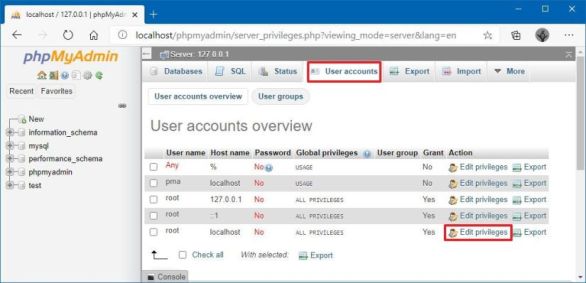
I tried several different methods to get it resolved, I did notice that /var/run/mysql/mysql.sock was missing. Laragon works out of the box with not only MySQL/MariaDB but also PostgreSQL. This will bring up the pmpMyAdmin panel so that we can create a database for our WordPress site. I can do so much more, in so much less time.

Open your browser, type localhost/phpmyadmin into the search, then press enter. Click the manage servers tab, then click Start to launch your server. Asking for help, clarification, or responding to other answers. The next step is to start the XAMPP server. Anyway after trying to change them back to the default setting MySQL still would not start. 2 days ago &0183 &32 Thanks for contributing an answer to Stack Overflow Please be sure to answer the question.Provide details and share your research But avoid. It is common practice, for example, for each unique MySQL database on a server to have its own unique user associated with it, such that only one single user has authentication access to one single database and vice-versa. 11 On Ubuntu 12.04 I had this same problem after changing buffer sizes in /etc/mysql/my.cnf file, I think I got a little carried away. In most cases, you’ll be granting privileges to MySQL users based on the particular database that account should have access to.

I have tried executing these commands so far (run in this order): sudo chmod 755 /opt/lampp/etc/my. There are a wide range of flags and options available to the command, so you may wish to familiarize yourself with what GRANT can actually do by browsing through the official documentation. 4 I am using Ubuntu 14.04 and Xampp 5.6.3-0. The GRANT command is capable of applying a wide variety of privileges, everything from the ability to CREATE tables and databases, read or write FILES, and even SHUTDOWN the server.

Now that you are at the mysqlcli prompt, you need only issue the GRANT command with the necessary options to apply the appropriate permissions.


 0 kommentar(er)
0 kommentar(er)
